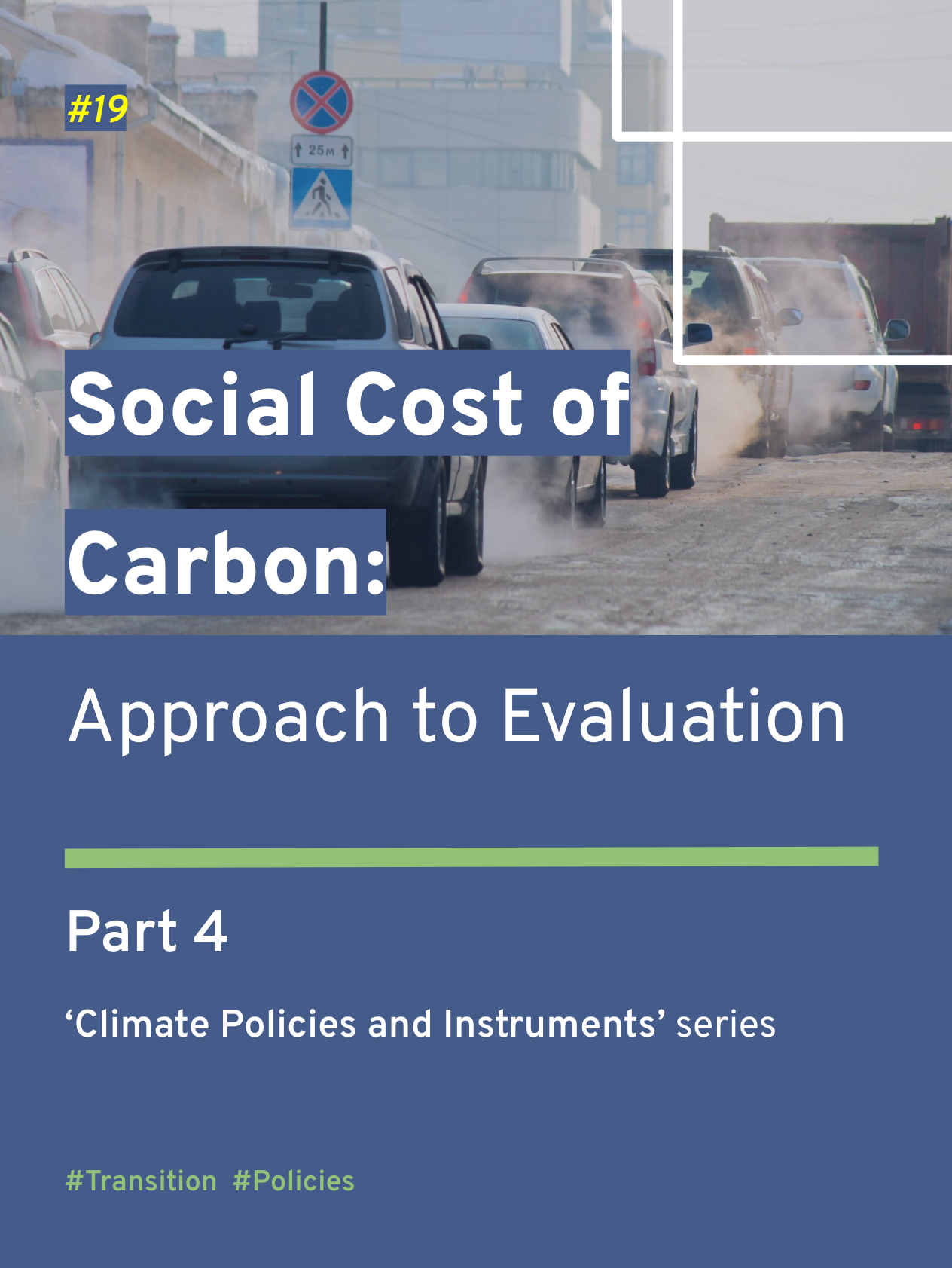Part 2 of ‘Climate Policies and Instruments’ series
Photo showing solar panels installed on building rooftops in Germany (Source: German Federal Ministry for Economic Affairs and Climate Action)
This blog series explores the various governance tools being employed to accelerate energy transition, starting with Germany’s Building Energy Act, 2023.
Part 1 established that the role of climate policies is to make sure less-polluting, high-efficiency alternatives for energy are available in the market, they are also accessible and attractive for consumers to take immediate action, at the lowest cost. Let’s look at how a command-and-control (CAC) instrument fairs this expectation through the case of Germany’s Building Energy Act (GEG, 2023), with comparative reflections on a widely used ‘economic instrument’ (the carbon tax).
Strengths: What makes CAC a preferred climate policy option?
Fixes poor or inefficient consumer choice: About half of German households (nearly 20 million) use high-emission heating systems. Less than three percent of the heating systems are electric (direct current). In 2021, nearly seventy percent of the newly installed systems were gas-based. This presents a serious need for government intervention to alter the status quo, by changing consumer choices. GEG 2023 attempts to do that.
CAC policies, in general, help reduce consumer choice-based mistakes and enhance predictability in shopping behaviour by imposing or explicitly informing consumers of preferred options or packaging them with higher incentives. Experts credit this as an opportunity for a ‘double dividend’—reducing emissions and altering consumer decisions at once. The same would apply to the changing behaviour of ‘corporate actors’, who are ‘rational polluters’ making choices that maximise their profits. Hence, CACs, as in the case of GEG 2023, could support fixing problems arising due to internality (losing money or utility because of an internal mistake) and externality (causing loss of money or utility for an external third party), and drive an immediate change.
Combines direct incentives: While CACs are generally known for setting standards and enforcing compliance, a few special cases, including GEG 2023, show the possibilities for combining direct incentives as part of the policy to the target sector, in this case, property owners. Though such efforts are politically driven in most instances, they could also work in favour of the policy’s near-term acceptance and implementation. Economists would argue that such practices are expensive and inefficient; however, often the political leaders' priorities are to safeguard the beneficiaries (households) from being affected by future hikes in oil prices or dependence on unreliable, dynamic, market-based incentives. CACs also provide an opportunity to identify the most vulnerable, devise exclusive rules for compliance, and declare exemptions, as in the case of property owners, 80 years and older, within GEG 2023.
Governments understand that as long as a product is working fine, a homeowner may not be willing to replace it. That’s where CAC comes to help in three ways—mandate the right choice legally and restrict the available options, make it also attractive by providing subsidies and incentives, and exempt certain users based on vulnerabilities and socio-economic background. If this is not enough push for change; legal action is warranted on violators. CACs do seem reasonable, isn’t it?
Weaknesses: What are CAC’s general limitations?
Though CACs attempt to make ‘exemptions’ and ‘special cases’ to account for vulnerable actors or top polluters, these policies largely operate as a ‘one-size-fits-all’ approach, without recognising the varying needs, challenges, and performances of actors. This raises efficiency and cost-effectiveness questions.
Restricts flexibility and emission reduction ambition: Though CACs could be designed with a range of choices, no government or policy-making institution can have a master list of all possible actions, to achieve the same goal. This makes the decisions on ‘who does what to reduce emissions, most cost-effectively, to suit their utility preferences’, mostly arbitrary or accidental. Such limitations leave CACs with less or no room to perform better than the prescribed standards. For example, in the case of GEG 2023, the actors are incentivised to only achieve a 65 percent renewable energy usage target for their heating systems, until 2045, and not higher, even if and when feasible options open up in the future unless the law is amended with a new technology standard. CACs also come with the risk of creating the ‘grandparenting’ or ‘old-plant’ effect, where stringent standards for new polluting sources, compared to the existing dirtier ones, could put the latter in operation much longer than they would otherwise have run.
On the other hand, a market-based instrument, like a carbon tax, could apply a uniform cost for saving every tonne of carbon across all available options (without the old vs. new distinction), which would encourage actors to choose with maximum benefits (utility) for them and the environment. The dynamic carbon price signals could also streamline consumer behaviour. To match up to the effectiveness of a carbon tax, in making actors choose the most appropriate options (balancing maximum personal utility and maximum environmental benefits), a “near-infinite number’ of CACs with robust enforcement mechanisms will be required.
Hinders cost-effectiveness: Another common criticism of CACs is picking inefficient emissions reduction targets for the selected source, focusing on high-cost technologies, and operationalizing them through missing, misplaced, or excessive incentives. For example, the incentives for GEG 2023 are not based on the amount of emissions reduction but on the cost of technology installation. This could mean that the implicit carbon price (cost of carbon emissions that arise from regulations, subsidies, or other market distortions impacting emissions) is higher than the actual social cost of carbon (a monetary estimate of the economic damages caused by emitting one additional ton of carbon dioxide into the atmosphere).
Alongside these, CACs could also incur substantial deployment and compliance verification costs. The costs further increase when law enforcement involves unaccountable product diversity, as in the case of heating systems for buildings of different sizes, shapes, and scales. Hence, CACs are generally noted as costlier instruments than other market-based mechanisms. It is critical to note that the initial estimate to implement GEG is about €9.16bn a year until 2028, and then decreasing to €5bn, with a predominant portion of funds going towards direct, one-time, packaged incentives, which could have been reduced substantially through a complementary market-based instrument.
The role of climate policies is to make sure less-polluting, high-efficiency alternatives for energy products and systems are available in the market, they are also accessible and attractive for consumers to take immediate action at the lowest cost. So, the common problem with CACs is reducing emissions “at the lowest cost”. Though CACs make sense mostly from a political and governance perspective, they fail to meet the economic principle.
A London bus enters the new Ultra Low Emission Zone that came into force on April 8, 2019. (Source: Frank Augstein/AP)
Conclusion: How could CACs support the global climate goal?
By forming a partnership with a tax-based instrument. If the government combines a carbon tax, on polluting fuels used for heating systems, with a flexible CAC policy, it would further accelerate the shift to cleaner energy, incentivise industries to innovate new technology alternatives, and also generate public funds that could be redistributed through subsidies or household tax rebates. Though CACs are not always the best option from an economic-efficiency perspective, there is consensus on employing them in matters of restricting the discharge of certain pollutants or maintaining threshold standards to obviate public health hazards. Whereas, in the context of emissions reduction, to achieve larger climate commitments, the effective solutions are those that equal the marginal damage caused by pollution with a cost. That would be possible more effectively with the support of market-based instruments, which decentralises the decisions and gets incentives right.
Law is powerful; but not necessarily economically efficient. The challenge at hand for researchers and policy designers, working to support global climate action, is to explore and devise a mix of policy portfolios that attractively combine CACs and other legal instruments (to tighten standards) with market-based instruments (to allow trading) and achieve both political will and economic efficiency. Notably, the Low Emission Zone policy in London and many other cities are striving to bring together the benefits of a CAC instrument and a carbon tax by imposing an emissions or technology standard and a fee on pollution at the same time to persuade behavioural change and emissions reduction.
Have questions, thoughts, or feedback? Write to nagendran.bala.m@gmail.com.









